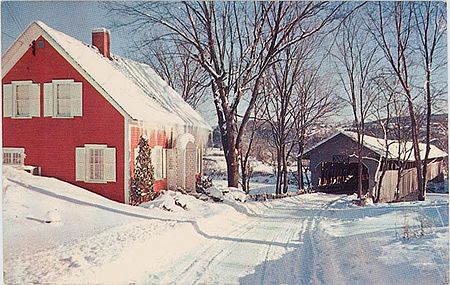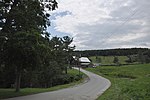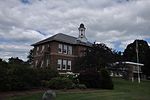Bedell Covered Bridge

The Bedell Bridge was a Burr truss covered bridge that spanned the Connecticut River between Newbury, Vermont and Haverhill, New Hampshire. Until its most recent destruction in 1979, it was, with a total length of 382 feet (116 m), the second-longest covered bridge in the United States. The bridge was divided into two spans of roughly equal length, and rested on a central pier and shore abutments constructed from mortared rough stone. The eastern abutment has been shored up by the addition of a concrete footing. The bridge was 23 feet (7.0 m) wide, with a roadway width of 18.5 feet (5.6 m). Because the state line is the western low-water mark of the Connecticut River, most of the bridge was in New Hampshire; only the western abutment is in Vermont.The site is now part of the 74-acre (30 ha) Bedell Bridge State Park in Haverhill, New Hampshire.
Excerpt from the Wikipedia article Bedell Covered Bridge (License: CC BY-SA 3.0, Authors, Images).Bedell Covered Bridge
Toll House Road,
Geographical coordinates (GPS) Address External links Nearby Places Show on map
Geographical coordinates (GPS)
| Latitude | Longitude |
|---|---|
| N 44.045277777778 ° | E -72.074166666667 ° |
Address
Bedell Bridge
Toll House Road
05051
Vermont, United States
Open on Google Maps








